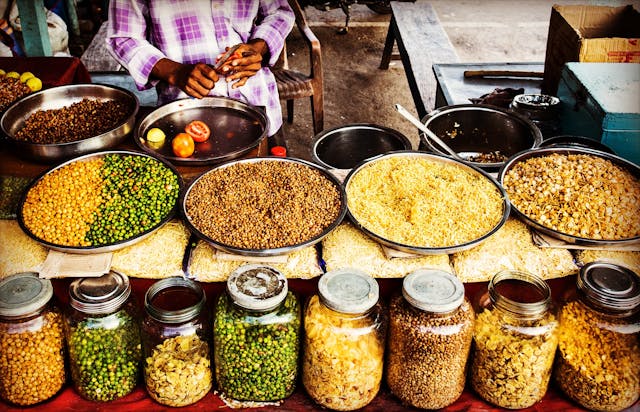
Did the spice trade change the world? The spice trade changed the world because it not only allowed people to flavor bland or not quite fresh food, but it also allowed for the exchange of wealth and ideas and encouraged exploration. It was the first step on the path to globalization.
When you are cooking your dinner, you might add some herbs for flavor. However, if you haven’t got any fresh herbs, you most likely have dried herbs or dried spices in your pantry. A few sprinklings of mixed spice can enliven any meal, no matter how bland. That pot of mixed spice probably won’t cost you a lot of money, but five hundred years ago, it was worth a small fortune. Incidentally, the difference between herbs and spices is actually the part of the plant that is used. Herbs are the leaves and the roots of the plant, whether eaten fresh or dried, and spices are the seeds of the plant, usually dried and crushed. For example, coriander can be a herb and a spice, depending on whether you are eating the leaves or the seeds.
People have added herbs and spices to their food since they learned how to cook. It adds flavor, but herbs and spices also mask the flavor of meat that is not particularly fresh, and some of them have medicinal qualities as well. The problem is that while a lot of herbs grow in many places, the exotic spices do not. Spices tend to need hot, tropical climates, with a lot of humidity. These are areas like South Asia, the Middle East, India, and South America. And, as with anything when one area has a monopoly of a product and another area needs that product, a trade sprang up. The spice trade first started four thousand years ago when people from the Land of Punt (which is roughly where Ethiopia is today) sold spices to the Egyptians. The spice trade flourished from there. The rise of the Greek and then the Roman empires increased the trade and the very famous Silk Road began to grow. Spices, amongst other things, were brought from India, China, and southern Asia, to be sold in Europe. Venice became a very powerful empire because it was able to control the flow of spices into Italy and Europe. Things changed somewhat when spices were discovered in the Americas. At its peak, some of the rarer spices were said to be more valuable than gold. It is probably doubtful that they ever reached quite that price, but they were certainly extremely expensive. So, why was the spice trade so important, and how did it change the world?
The first way was that it built cities along the trade route. Trade was obviously not as quick then as it is today and spices had to travel for months overland to reach their destination in Europe. These spice merchants and all of the people that ended up using the trade routes needed to stop somewhere and cities grew up along the route. These cities became an important part of the trade network and many of them are still here today.
The second way was the transfer of ideas. The trade routes were initially set up to sell spices, silks, and other fine things out of Asia, but when people move, ideas move as well. The merchants would carry news from where they came from and then carry news back from where they had been, but they would also carry knowledge with them as well. Inventions that they had seen, new ways of thinking, new types of technology, could pass along the trade routes as well. Many inventions from China came to Europe this way and mathematics travelled into Europe from India and the Middle East in the same way.
And one of the greatest ways the spice trade changed the world was through exploration. Many of the famous explorers that circumnavigated the world, Magellan, or discovered the Americas, Columbus, were sailing to try and find spices. The Portuguese explorer Vasco da Gama discovered a route by ship from Europe to India, going via the Cape of Good Hope, which vastly changed and sped up the spice trade. Columbus discovered the Americas while looking for a shorter route to India so that he could bring back spices. To his dying day, he believed he had landed on the East coast of India. And Magellan was looking for spices on his round-the-world voyage. The Portuguese and Spanish colonization of South America was largely driven by gold and spices. The British colonization of India was largely down to spices as well. All of this exploration required technological advances in seafaring and navigation as well. If it hadn’t been for the spice trade, our world would look at lot different to the way it does now. And this is what I learned today.
Try these:
Sources
https://silkroadspices.ca/pages/history-of-the-spice-trade
https://www.bbc.com/future/bespoke/made-on-earth/the-flavours-that-shaped-the-world
https://en.wikipedia.org/wiki/Spice_trade
https://www.livescience.com/7495-spice-trade-changed-world.html
Photo by NEOSiAM 2024+: https://www.pexels.com/photo/clear-glass-jars-with-assorted-foods-618491/
